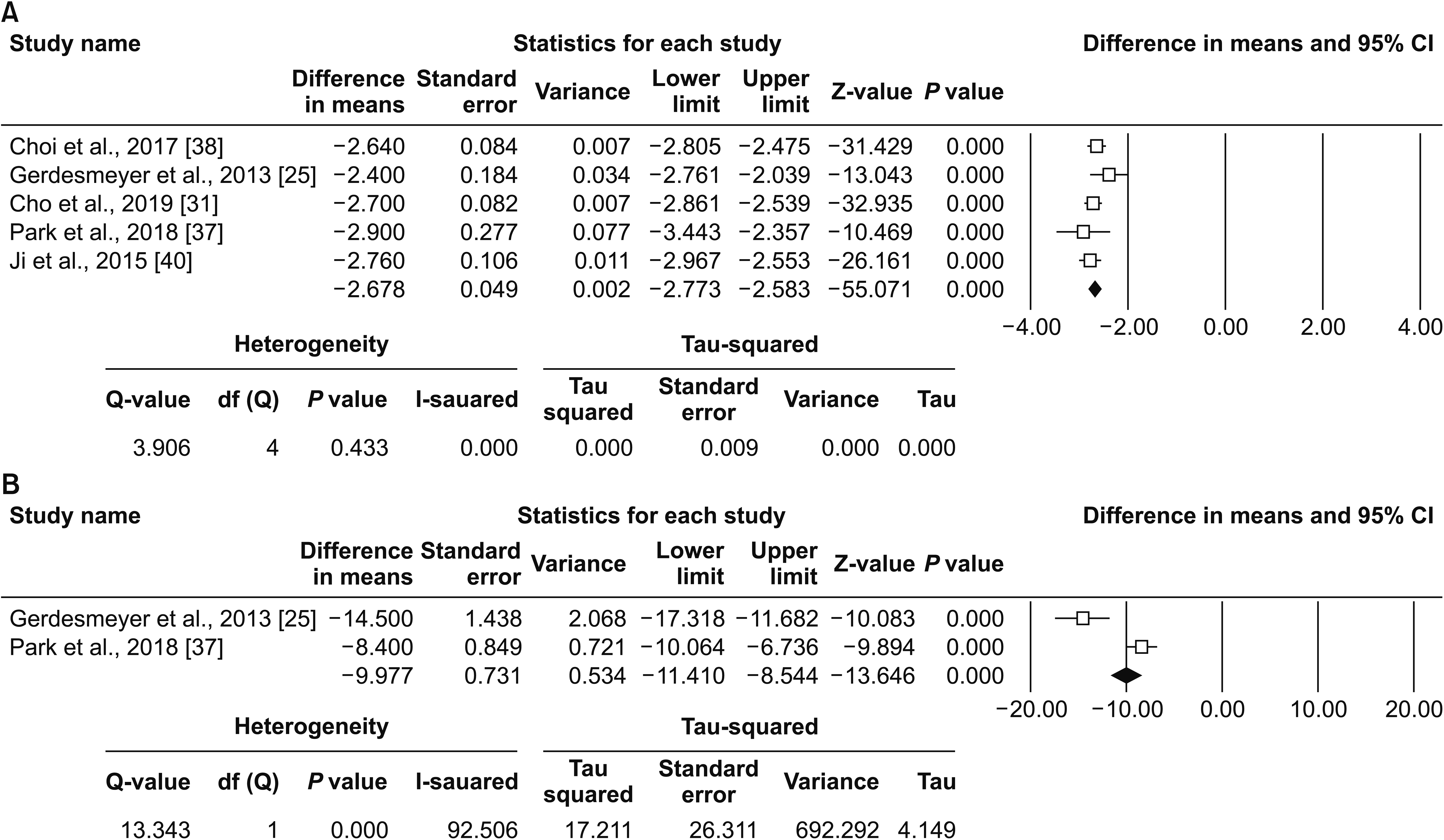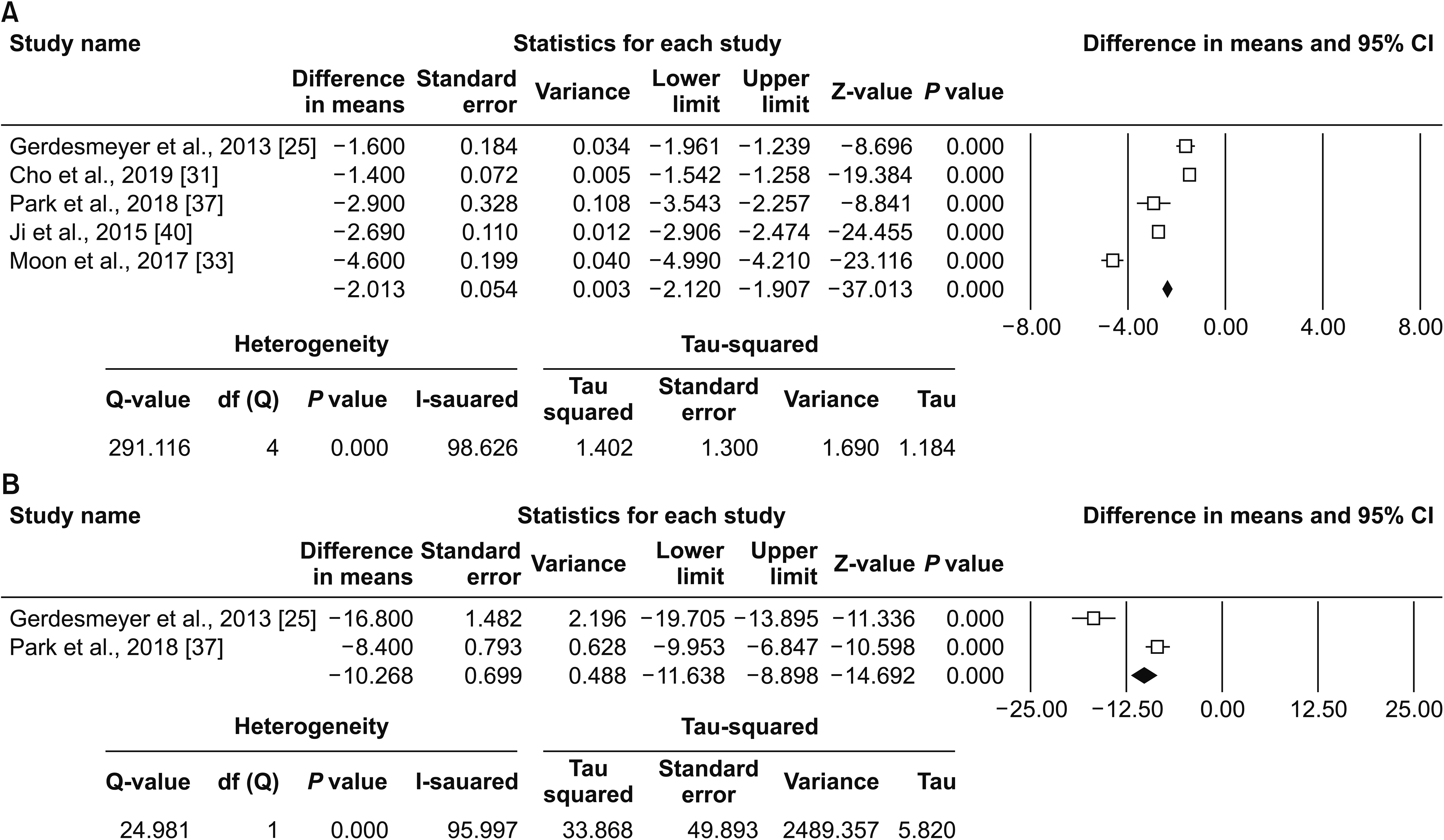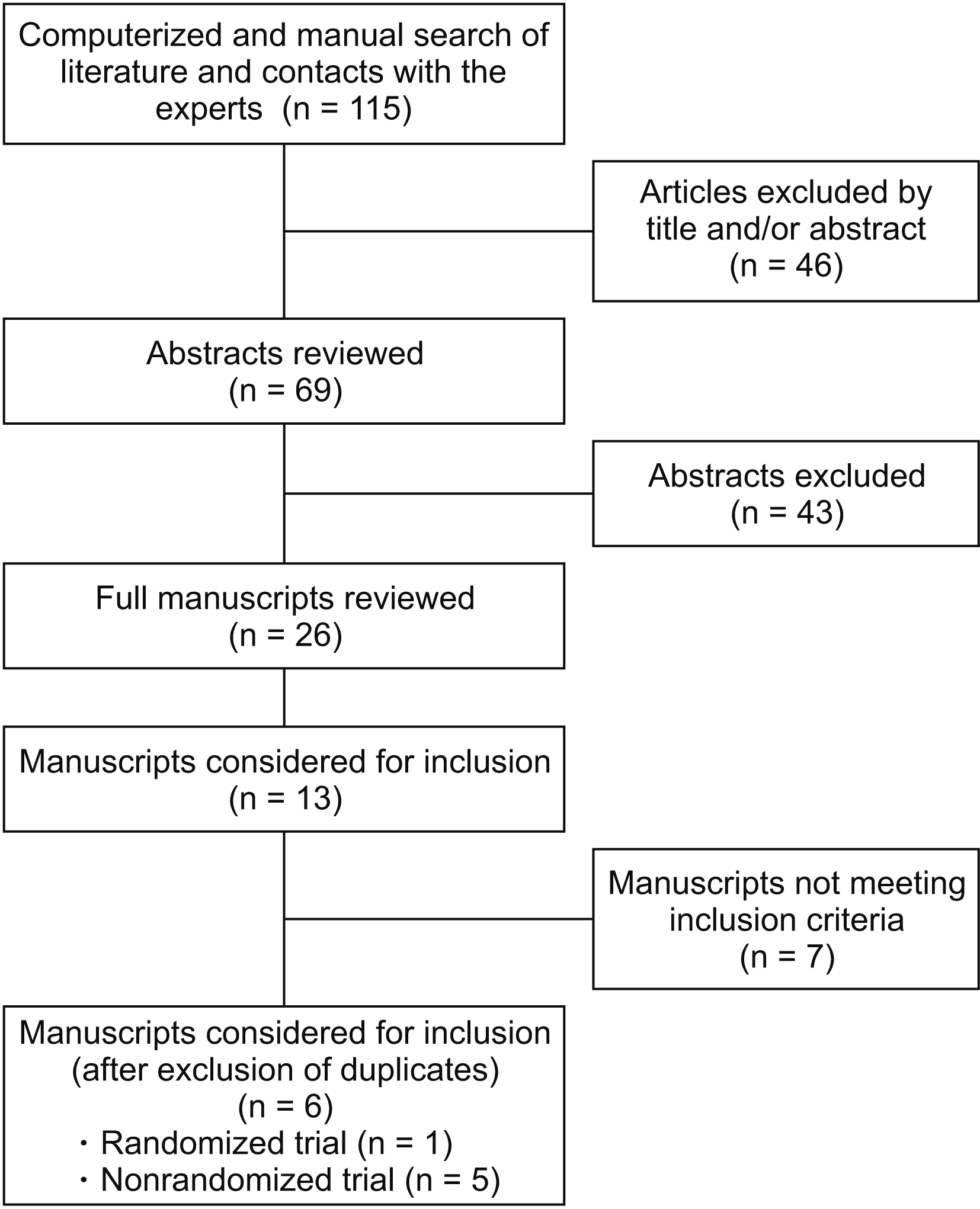1. Manchikanti L, Knezevic NN, Navani A, Christo PJ, Limerick G, Calodney AK, et al. 2021; Epidural interventions in the management of chronic spinal pain: American Society of Interventional Pain Physicians (ASIPP) comprehensive evidence-based guidelines. Pain Physician. 24(S1):S27–208. DOI:
10.36076/ppj.2021.24.S27-S208. PMID:
33492918.
2. Mixter WJ, Barr JS. 1934; Rupture of the intervertebral disc with involvement of the spinal canal. N Engl J Med. 211:210–5. DOI:
10.1056/NEJM193408022110506.

3. Andersson G. Frymoyer JW, Ducker TB, Hadler NM, Kostuik JP, Weinstein JN, Whitecloud TS, editors. 1997. Epidemiology of spinal disorders. The adult spine: principles and practice. 2nd ed. Raven Press;New York: p. 93–141.
4. Heliövaara M. 1988. Epidemiology of sciatica and herniated lumbar intervertebral disc. The Social Insurance Institution;Helsinki:
5. Friberg S, Hirsch C. 1949; Anatomical and clinical studies on lumbar disc degeneration. Acta Orthop Scand. 19:222–42. DOI:
10.3109/17453674908991095. PMID:
15400964.

6. Schultz A, Andersson G, Ortengren R, Haderspeck K, Nachemson A. 1982; Loads on the lumbar spine. Validation of a biomechanical analysis by measurements of intradiscal pressures and myoelectric signals. J Bone Joint Surg Am. 64:713–20. DOI:
10.2106/00004623-198264050-00008. PMID:
7085696.

7. Zhong M, Liu JT, Jiang H, Mo W, Yu PF, Li XC, et al. 2017; Incidence of spontaneous resorption of lumbar disc herniation: a meta-analysis. Pain Physician. 20:E45–52. DOI:
10.36076/ppj.2017.1.E45. PMID:
28072796.
8. Chiu CC, Chuang TY, Chang KH, Wu CH, Lin PW, Hsu WY. 2015; The probability of spontaneous regression of lumbar herniated disc: a systematic review. Clin Rehabil. 29:184–95. DOI:
10.1177/0269215514540919. PMID:
25009200.

9. Ahn SH, Ahn MW, Byun WM. 2000; Effect of the transligamentous extension of lumbar disc herniations on their regression and the clinical outcome of sciatica. Spine (Phila Pa 1976). 25:475–80. DOI:
10.1097/00007632-200002150-00014. PMID:
10707394.

10. Manchikanti L, Knezevic NN, Boswell MV, Kaye AD, Hirsch JA. 2016; Epidural injections for lumbar radiculopathy and spinal stenosis: a comparative systematic review and meta-analysis. Pain Physician. 19:E365–410. DOI:
10.36076/ppj/2016.19.E365. PMID:
27008296.
11. Oster BA, Kikanloo SR, Levine NL, Lian J, Cho W. 2020; Systematic review of outcomes following 10-year mark of Spine Patient Outcomes Research Trial for intervertebral disc herniation. Spine (Phila Pa 1976). 45:825–31. DOI:
10.1097/BRS.0000000000003400. PMID:
32004232.

12. Helm S 2nd, Racz GB, Gerdesmeyer L, Justiz R, Hayek SM, Kaplan ED, et al. 2016; Percutaneous and endoscopic adhesiolysis in managing low back and lower extremity pain: a systematic review and meta-analysis. Pain Physician. 19:E245–82. DOI:
10.36076/ppj/2016.19.E245. PMID:
26815254.
13. Manchikanti L, Soin A, Boswell MV, Kaye AD, Sanapati M, Hirsch JA. 2019; Effectiveness of percutaneous adhesiolysis in post lumbar surgery syndrome: a systematic analysis of findings of systematic reviews. Pain Physician. 22:307–22. DOI:
10.36076/ppj/2019.22.307. PMID:
31337160.
14. Manchikanti L, Knezevic NN, Sanapati MR, Boswell MV, Kaye AD, Hirsch JA. 2019; Effectiveness of percutaneous adhesiolysis in managing chronic central lumbar spinal stenosis: a systematic review and meta-analysis. Pain Physician. 22:E523–50. DOI:
10.36076/ppj/2019.22.E523. PMID:
31775400.
15. Manchikanti L, Knezevic NN, Sanapati SP, Sanapati MR, Kaye AD, Hirsch JA. 2020; Is percutaneous adhesiolysis effective in managing chronic low back and lower extremity pain in post-surgery syndrome: a systematic review and meta-analysis. Curr Pain Headache Rep. 24:30. DOI:
10.1007/s11916-020-00862-y. PMID:
32468418.

16. Cho JH, Lee JH, Song KS, Hong JY, Joo YS, Lee DH, et al. 2017; Treatment outcomes for patients with failed back surgery. Pain Physician. 20:E29–43. DOI:
10.36076/ppj.2017.1.E29. PMID:
28072795.
17. Manchikanti L, Kosanovic R, Pampati V, Kaye AD. 2021; Declining utilization patterns of percutaneous adhesiolysis procedures in the fee-for-service (FFS) medicare population. Pain Physician. 24:17–29. PMID:
33400425.
18. Heavner JE, Racz GB, Raj P. 1999; Percutaneous epidural neuroplasty: prospective evaluation of 0.9% NaCl versus 10% NaCl with or without hyaluronidase. Reg Anesth Pain Med. 24:202–7. DOI:
10.1016/S1098-7339(99)90128-1. PMID:
10338168.
19. Racz GB, Racz GJ, Racz TA. 2020. Interventional pain management procedures. Pain management for clinicians: a guide to assessment and treatment. Springer;Cham: p. 523–653. DOI:
10.1007/978-3-030-39982-5_20.

20. McCarron RF. Noe C, editor. 1989. Epidural fibrosis: experimental model and therapeutic alternatives. Techniques of neurolysis. Kluwer Academic Publishers;Boston: p. 87–94. DOI:
10.1007/978-1-4899-6721-3_8.

22. Kuslich SD, Ulstrom CL, Michael CJ. 1991; The tissue origin of low back pain and sciatica: a report of pain response to tissue stimulation during operations on the lumbar spine using local anesthesia. Orthop Clin North Am. 22:181–7. DOI:
10.1016/S0030-5898(20)31644-8. PMID:
1826546.
23. Zhu L, Huang Y, Hu Y, Tang Q, Zhong Y. 2021; Toll-like receptor 4/nuclear factor-kappa B pathway is involved in radicular pain by encouraging spinal microglia activation and inflammatory response in a rat model of lumbar disc herniation. Korean J Pain. 34:47–57. DOI:
10.3344/kjp.2021.34.1.47. PMID:
33380567. PMCID:
PMC7783850.

24. Hazer DB, Acarbaş A, Rosberg HE. 2018; The outcome of epiduroscopy treatment in patients with chronic low back pain and radicular pain, operated or non-operated for lumbar disc herniation: a retrospective study in 88 patients. Korean J Pain. 31:109–15. DOI:
10.3344/kjp.2018.31.2.109. PMID:
29686809. PMCID:
PMC5904345.

25. Gerdesmeyer L, Wagenpfeil S, Birkenmaier C, Veihelmann A, Hauschild M, Wagner K, et al. 2013; Percutaneous epidural lysis of adhesions in chronic lumbar radicular pain: a randomized, double-blind, placebo-controlled trial. Pain Physician. 16:185–96. DOI:
10.36076/ppj.2013/16/185. PMID:
23703406.
26. 2021. Preferred Reporting Items for Systematic Reviews and Meta-Analyses (PRISMA) [Internet]. PRISMA;Available at:
http://prisma-statement.org/.
27. Furlan AD, Malmivaara A, Chou R, Maher CG, Deyo RA, Schoene M, et al. Editorial Board of the Cochrane Back, Neck Group. 2015; 2015 updated method guideline for systematic reviews in the Cochrane Back and Neck Group. Spine (Phila Pa 1976). 40:1660–73. DOI:
10.1097/BRS.0000000000001061. PMID:
26208232.

28. Manchikanti L, Hirsch JA, Cohen SP, Heavner JE, Falco FJ, Diwan S, et al. 2014; Assessment of methodologic quality of randomized trials of interventional techniques: development of an interventional pain management specific instrument. Pain Physician. 17:E263–90. DOI:
10.36076/ppj.2014/17/E263. PMID:
24850111.
29. Manchikanti L, Hirsch JA, Heavner JE, Cohen SP, Benyamin RM, Sehgal N, et al. 2014; Development of an interventional pain management specific instrument for methodologic quality assessment of nonrandomized studies of interventional techniques. Pain Physician. 17:E291–317. DOI:
10.36076/ppj.2014/17/E291. PMID:
24850112.
30. Manchikanti L, Falco FJ, Benyamin RM, Kaye AD, Boswell MV, Hirsch JA. 2014; A modified approach to grading of evidence. Pain Physician. 17:E319–25. DOI:
10.36076/ppj.2014/17/E319. PMID:
24850113.

31. Cho PG, Ji GY, Yoon YS, Shin DA. 2019; Clinical effectiveness of percutaneous epidural neuroplasty according to the type of single-level lumbar disc herniation: a 12-month follow-up study. J Korean Neurosurg Soc. 62:681–90. DOI:
10.3340/jkns.2019.0070. PMID:
31591998. PMCID:
PMC6835144.

32. Moon SH, Park JY, Cho SS, Cho HS, Lee JY, Kim YJ, et al. 2016; Comparative effectiveness of percutaneous epidural adhesiolysis for different sacrum types in patients with chronic pain due to lumbar disc herniation: a propensity score matching analysis. Medicine (Baltimore). 95:e4647. DOI:
10.1097/MD.0000000000004647. PMID:
27631213. PMCID:
PMC5402556.
33. Moon SH, Lee JI, Cho HS, Shin JW, Koh WU. 2017; Factors for predicting favorable outcome of percutaneous epidural adhesiolysis for lumbar disc herniation. Pain Res Manag. 2017:1494538. DOI:
10.1155/2017/1494538. PMID:
28246488. PMCID:
PMC5299181.

34. Taheri A, Khajenasiri AR, Nazemian Yazdi NA, Safari S, Sadeghi J, Hatami M. 2016; Clinical evaluation of percutaneous caudal epidural adhesiolysis with the Racz technique for low back pain due to contained disc herniation. Anesth Pain Med. 6:e26749. DOI:
10.5812/aapm.26749. PMID:
27826538. PMCID:
PMC5097854.

35. Cho S, Park HS. 2016; Percutaneous epidural adhesiolysis with epidural steroid injection: a non-inferiority test of non-particulate steroids versus particulate steroids. Pain Med. 17:1612–9. DOI:
10.1093/pm/pnw021. PMID:
26940717.

36. Kalagac Fabris L, Šuput A, Gusić N, Mamontov P. 2019; Epidural adhesiolysis in the management of chronic low back pain in failed back surgery syndrome and in lumbar radicular pain: first year of experience at Pula General Hospital, Pula, Croatia - a randomized trial. Acta Med Croatica. 73:57–65. DOI:
10.26226/morressier.5b519f6cb1b87b000ecf15c0.
37. Park SH, Ji GY, Cho PG, Shin DA, Yoon YS, Kim KN, et al. 2018; Clinical significance of epidurography contrast patterns after adhesiolysis during lumbar percutaneous epidural neuroplasty. Pain Res Manag. 2018:6268045. DOI:
10.1155/2018/6268045. PMID:
29808106. PMCID:
PMC5901487.

38. Choi EJ, Yoo YJ, Lee PB, Kim YC, Lee SC, Moon JY. 2017; A retrospective study to evaluate the effect of concentration of hypertonic saline on efficacy and safety of epidural adhesiolysis. Anesth Analg. 124:2021–9. DOI:
10.1213/ANE.0000000000001925. PMID:
28448392.

39. Lee JH, Lee SH. 2012; Clinical effectiveness of percutaneous adhesiolysis using Navicath for the management of chronic pain due to lumbosacral disc herniation. Pain Physician. 15:213–21. DOI:
10.36076/ppj.2012/15/213. PMID:
22622905.
40. Ji GY, Oh CH, Moon B, Choi SH, Shin DA, Yoon YS, et al. 2015; Efficacy of percutaneous epidural neuroplasty does not correlate with dural sac cross-sectional area in single level disc disease. Yonsei Med J. 56:691–7. DOI:
10.3349/ymj.2015.56.3.691. PMID:
25837174. PMCID:
PMC4397438.

41. Veihelmann A, Devens C, Trouillier H, Birkenmaier C, Gerdesmeyer L, Refior HJ. 2006; Epidural neuroplasty versus physiotherapy to relieve pain in patients with sciatica: a prospective randomized blinded clinical trial. J Orthop Sci. 11:365–9. DOI:
10.1007/s00776-006-1032-y. PMID:
16897200.

42. Sicard MA. 1901; Extradural drug injections by saracoccygiane route. C R Seances Soc Biol Fil. 53:396–8. French.
43. Ter Meulen BC, Weinstein H, Ostelo R, Koehler PJ. 2016; The epidural treatment of sciatica: its origin and evolution. Eur Neurol. 75:58–64. DOI:
10.1159/000443729. PMID:
26820578.

44. Robecchi A, Capra R. 1952; Hydrocortisone (compound F); first clinical experiments in the field of rheumatology. Minerva Med. 43:1259–63. Italian. PMID:
13036739.
45. Lievre JA, Bloch-Mechel H, Pean G, Uro J. 1953; Hydrocortisone in local injection. Rev Rhum Mal Osteoartic. 20:310–1. French.
46. Manchikanti L, Sanapati MR, Pampati V, Boswell MV, Kaye AD, Hirsch JA. 2019; Update on reversal and decline of growth of utilization of interventional techniques in managing chronic pain in the Medicare population from 2000 to 2018. Pain Physician. 22:521–36. DOI:
10.36076/ppj/2019.22.521. PMID:
31775397.
47. Manchikanti L, Soin A, Mann DP, Bakshi S, Pampati V, Kaye AD, et al. 2019; Utilization patterns of facet joint interventions in managing spinal pain: a retrospective cohort study in the US fee-for-service Medicare population. Curr Pain Headache Rep. 23:73. DOI:
10.1007/s11916-019-0816-7. PMID:
31388874.

48. Manchikanti L, Pampati V, Soin A, Sanapati MR, Kaye AD, Hirsch JA. 2021; Declining utilization and inflation-adjusted expenditures for epidural procedures in chronic spinal pain in the Medicare population. Pain Physician. 24:1–15. PMID:
33400424.
49. Manchikanti L, Pampati V, Parr Iii A, Manchikanti MV, Sanapati MR, Kaye AD, et al. 2019; Cervical interlaminar epidural injections in the treatment of cervical disc herniation, post surgery syndrome, or discogenic pain: cost utility analysis from randomized trials. Pain Physician. 22:421–31. DOI:
10.36076/ppj/2019.22.421. PMID:
31561644.
50. Manchikanti L, Pampati V, Benyamin RM, Hirsch JA. 2017; Cost utility analysis of lumbar interlaminar epidural injections in the treatment of lumbar disc herniation, central spinal stenosis, and axial or discogenic low back pain. Pain Physician. 20:219–28. DOI:
10.36076/ppj.2017.228. PMID:
28535546.
51. Chou R, Hashimoto R, Friedly J, Fu R, Bougatsos C, Dana T, et al. 2015; Epidural corticosteroid injections for radiculopathy and spinal stenosis: a systematic review and meta-analysis. Ann Intern Med. 163:373–81. DOI:
10.7326/M15-0934. PMID:
26302454.

52. Manchikanti L, Kaye AD, Soin A, Albers SL, Beall D, Latchaw R, et al. 2020; Comprehensive evidence-based guidelines for facet joint interventions in the management of chronic spinal pain: American Society of Interventional Pain Physicians (ASIPP) guidelines facet joint interventions 2020 guidelines. Pain Physician. 23(3S):S1–127. DOI:
10.36076/ppj.2020/23/S1. PMID:
32503359.






 PDF
PDF Citation
Citation Print
Print




 XML Download
XML Download